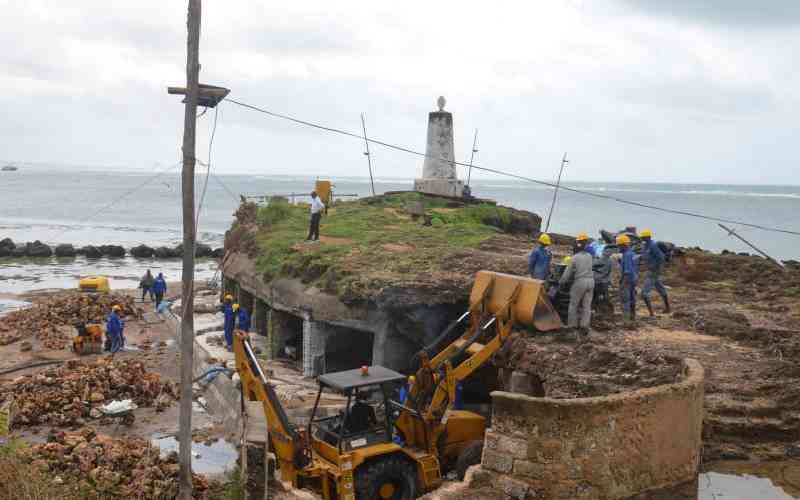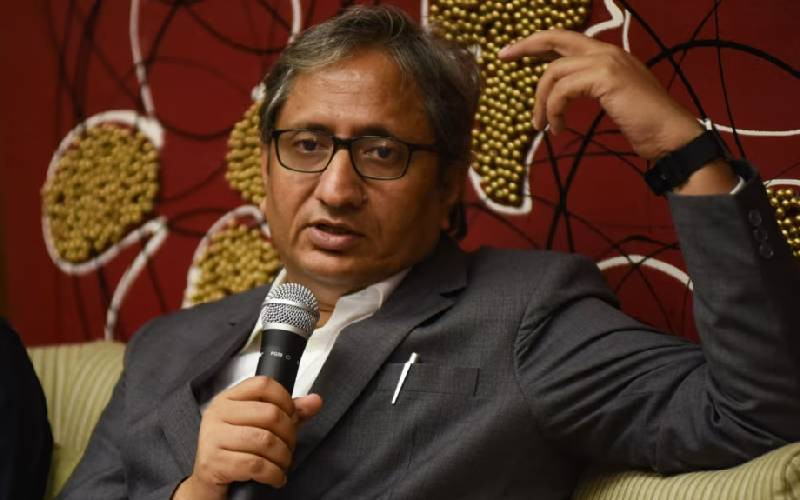
Nothing out here excites me more than newsrooms. Wondering why? Well, to me any newsroom is like purgatory ...everyone is always there patiently waiting to go to heaven yet they are not sure that they will make the cut.
The thrill, rush to beat deadlines and adrenaline rush I get is an experience relished even as it presents an opportunity to learn something new everyday.
Thankfully my friends in this business don’t mind me dropping in on them unannounced and doing a story or two before crawling back to my nest.
I have noted with great concern that unlike in Kenya where many seem to imagine that creativity in journalism means you kick back in your chair, call on the muse for some incandescent prose and wait for the Pulitzer Awards to roll in, feature stories in India are treated from a whole new spectrum.
Assigned to women
To me, this notion we seem to stick to is as misplaced as it is persistent; sadly, you can’t keep a good myth down. When I broke into the business a few years ago, I learned quickly that features were seemingly considered frills.
They were usually assigned to women, or men who were considered slightly womanly: sensitive and rather literary.
Perhaps this is one of the reasons India is where it is on matters such as healthcare reporting, keeping in mind that a newspaper is but a nation talking to itself.
As much as we have assignments as journalists, we are expected to come up with our own ideas most of the time. Editors won’t buy all of them, but whether they give you the go-ahead or not, I want you to remember and remind them how much they need your ideas.
Editors sit, reporters walk. Then also your ability to write well is based on your ability to see well, and they want you on the street, discovering what is extraordinary in what is ordinary for the rest of the people.
They want to know what you catch out of the comer of your eye, what you overhear being said and not said, what you discover when you observe our world from your point of view.
They hope you'll continue to be surprised at what you find and that you'll surprise them and the readers.
The recent story revealing how Kenyan supermarkets use high levels of sodium metabisulphite to preserve red meat and the attention and reaction it received should serve as a lesson to any budding journalist who wants to understand just how serious the public takes health stories.
I see this as a gap that is wide open because at a time many people are focused on he said/she said political rhetoric journalism that serves entertainment, our informative role as journalists seems to have been frozen.
Stay informed. Subscribe to our newsletter
Don’t get me wrong. Hard news is still our first priority, but it is delivered today by radio, the internet and television as well as newspapers.
People read to learn what and when and who and where, but they also read to discover why and how and what it will mean in the future.
Features give us depth and implication; they put people in the story; they make the reader think and care. They are read and clipped and passed around and photocopied and are often the real reason that readers buy our products. I try to never forget all I learned about reporting.
The feature writer is a reporter first of all, and the more you work to make your writing perceptive, insightful, stimulating, and moving -- the more you learn to write so that you can capture the world.
They are also used to follow the news; now, they often tell the reader and the editor what will be news in the days, weeks, months and years ahead.
Get off the phone
To discover this news that isn't already news, you have to develop a writer's eyes that can look at the world without hard news stereotypes, catch the trend before it is a trend, spot changes in society before there is a press conference to announce the change, find stories that are not based on an event.
Perceptive, probing features give depth and texture to our coverage of the news. Features put people on our pages that walk and talk and become real-and significant-as our readers meet them.
To do this you have to get off the phone and out of the office. One technique you'll find helpful is to work off deadline.
Get to the press conference ahead of time and talk to the makeup artist who works on the presidential candidate's face, interview the nurse who helped "harvest" a heart for a transplant, find out how a loan officer decides who should get money - and who shouldn't.
Stay on the scene of the accident after the ambulance is gone; visit the victim's family a week later. I have learned that the importance of a writer is being there to describe things which other people are too busy to describe.
Leon Lidigu is a student of journalism at Pacific University, India
 The Standard Group Plc is a
multi-media organization with investments in media platforms spanning newspaper
print operations, television, radio broadcasting, digital and online services. The
Standard Group is recognized as a leading multi-media house in Kenya with a key
influence in matters of national and international interest.
The Standard Group Plc is a
multi-media organization with investments in media platforms spanning newspaper
print operations, television, radio broadcasting, digital and online services. The
Standard Group is recognized as a leading multi-media house in Kenya with a key
influence in matters of national and international interest.
 The Standard Group Plc is a
multi-media organization with investments in media platforms spanning newspaper
print operations, television, radio broadcasting, digital and online services. The
Standard Group is recognized as a leading multi-media house in Kenya with a key
influence in matters of national and international interest.
The Standard Group Plc is a
multi-media organization with investments in media platforms spanning newspaper
print operations, television, radio broadcasting, digital and online services. The
Standard Group is recognized as a leading multi-media house in Kenya with a key
influence in matters of national and international interest.









